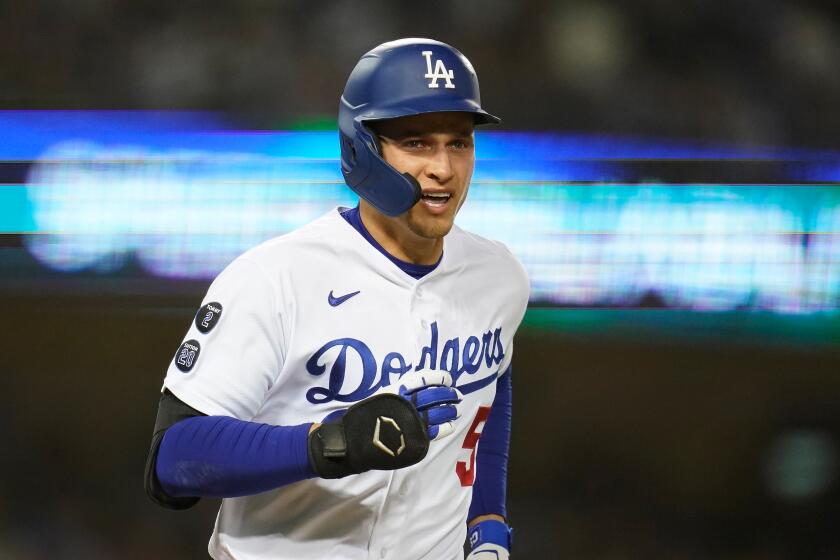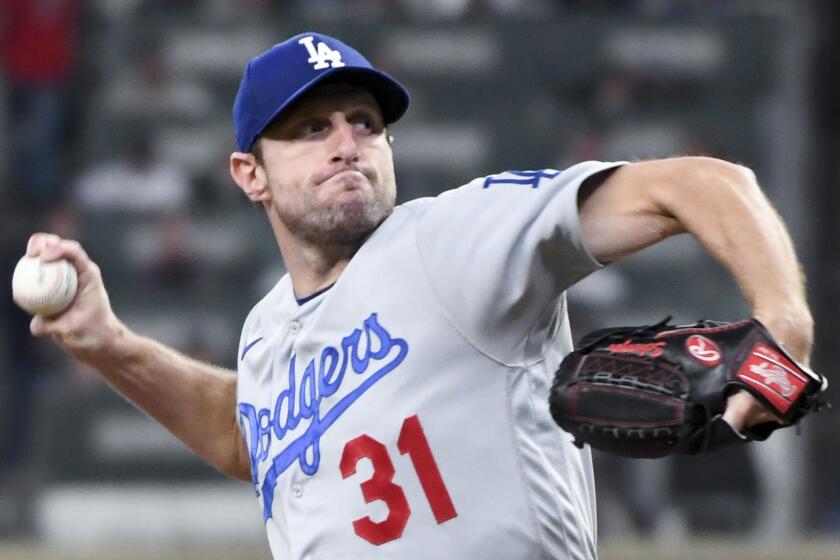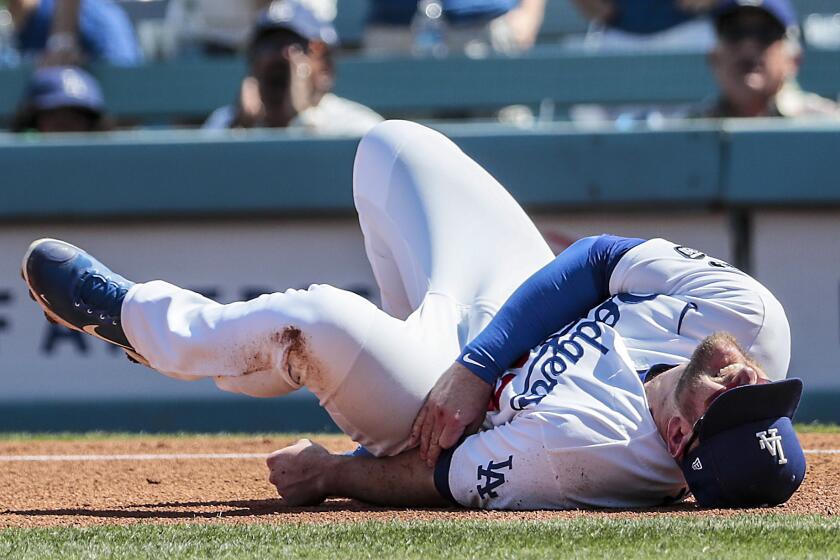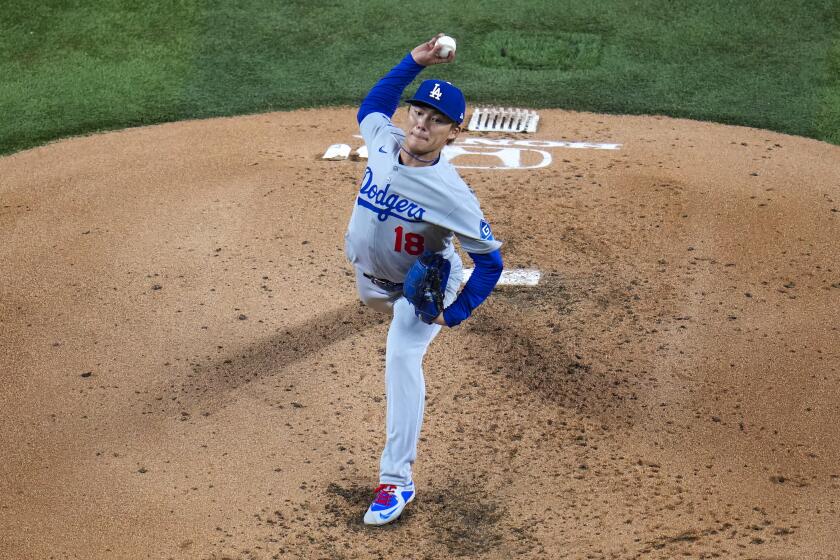Playoffs in peril? Dodgers operating in new reality after free-agency massacre
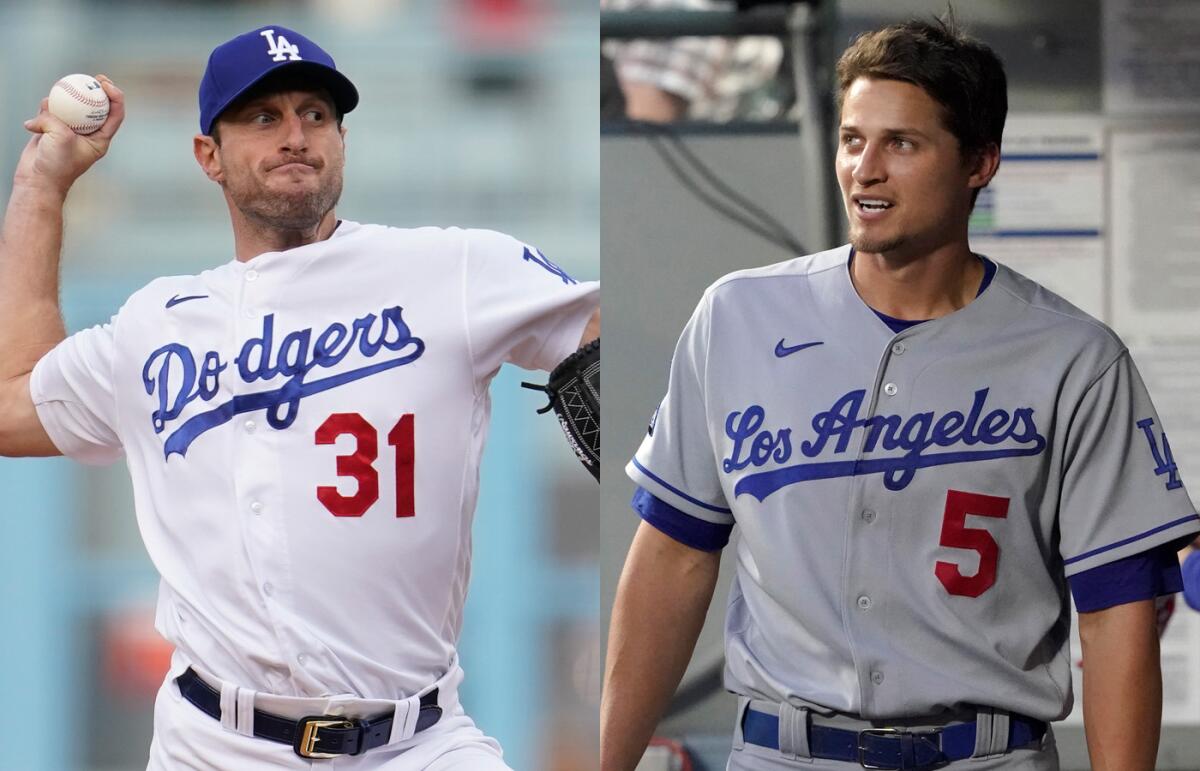
- Share via
October baseball was a birthright in these parts, the Dodgers virtually guaranteed a spot in the postseason for the majority of the last decade.
You know, back in the good old days.
The Dodgers are operating under a new reality in the wake of a Monday Massacre in which their worst fears were realized.
Their best hitter, Corey Seager, agreed to a 10-year, $325-million deal with the Texas Rangers.
Their best pitcher, Max Scherzer, accepted a three-year, $130-million offer from the New York Mets.
The exodus of talent could very well continue, as Clayton Kershaw, Chris Taylor and Kenley Jansen are free agents.
Dodgers World Series MVP Corey Seager agrees to a 10-year, $325-million deal with the Texas Rangers. Will the Rangers also snag Clayton Kershaw?
Instead of thinking of what they could do to advance further in the playoffs next year, the Dodgers will now be scrambling to just return to the postseason.
Andrew Friedman doesn’t have to rebuild their roster, but he certainly has to refurbish it, a process that could result in him making the kinds of franchise-altering moves he made in his first offseason as the team’s president of baseball operations.
The conditions are less than ideal for such an undertaking.
The league still hasn’t disciplined Trevor Bauer for the sexual assault allegations made against him, meaning the Dodgers don’t know how much of his $32-million salary for 2022 they will have to pay. Players are expected to be locked out after the collective-bargaining agreement expires on Wednesday, meaning the free-agent and trade markets are about to be frozen for an indefinite period.
Seager’s and Scherzer’s deals point to how the Dodgers have more competition for players than they previously did. The Rangers have already spent more than $550 million on free agents. Under hedge-fund executive Steve Cohen, the Mets are spending how the Dodgers did in their early days under Guggenheim Baseball Management.
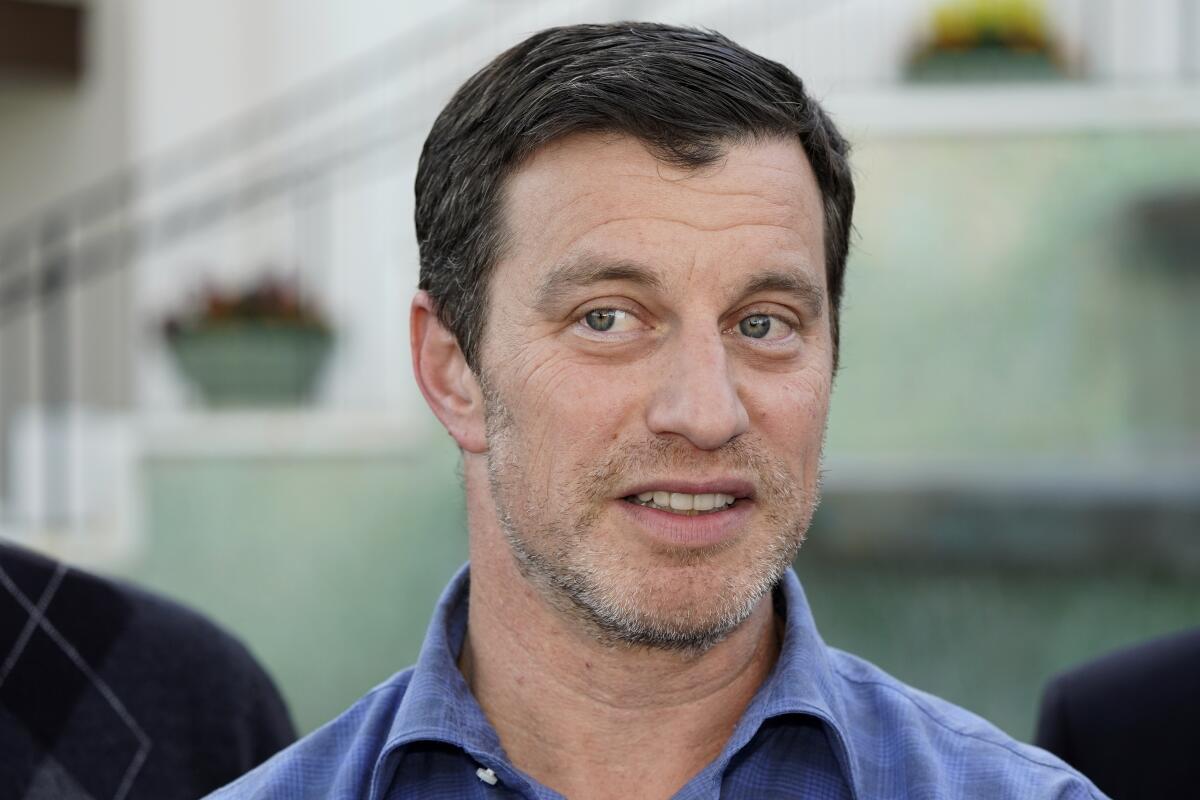
The Dodgers now have legitimate rivals in their division in the San Francisco Giants and San Diego Padres.
Friedman, however, isn’t starting from scratch.
The Dodgers still have two elite players at the top of their lineup in Mookie Betts and Trea Turner, who could move from second base to shortstop to replace Seager. (Turner will be a free agent at the end of next season and might be more of a one-year Band-Aid than a long-term solution.) Justin Turner and Will Smith are legitimate offensive threats.
But as the roster is currently constructed, Seager’s departure demands that Cody Bellinger rediscovers his MVP form after a down year. Or for Gavin Lux to become the player he was expected to be before his development stalled. Or for Max Muncy to recover from a season-ending elbow injury.
Muncy revealed he suffered a torn ulnar collateral ligament in an interview Monday with MLB Network.
Max Scherzer will not return to the Dodgers for the 2022 season. He has agreed to a three-year, $130-million contract with the New York Mets.
“I’m not recovering as quick as I would like, but that’s what happens when you do some serious damage to your body,” Muncy admitted.
Losing Taylor could result in other problems. Taylor’s ability to play multiple positions kept him in the lineup on most days, sparing manager Dave Roberts from having to turn to his reserves as often as he would have otherwise.
As much as Albert Pujols’ contributions were celebrated, the reality was the Dodgers’ bench was weaker last year than it had been in any previous season under Friedman. The shortcoming was particularly obvious in the postseason when the team resorted to deploying Steven Souza Jr. as a pinch-hitter.
With Scherzer moving on and Kershaw weighing his options, the traditional strength of the Dodgers has become a weakness. They don’t have a rotation.
The Dodgers have Walker Buehler and Julio Urías but little beyond that.
They have taken a $8.5-million flier on homer-prone Andrew Heaney. They are counting on Dustin May to return from reconstructive elbow surgery at some point. They will probably be forced to continue extending opportunities to the likes of David Price, who doesn’t look like a major league starter anymore, or Tony Gonsolin, who has never proven himself to be one.
The injury Max Muncy suffered on the last day of the regular season was worse than the Dodgers initially said. Muncy said he tore an elbow ligament.
Their farm system hasn’t produced another Buehler or Urías.
The free-agent market alone won’t address their needs, especially now that many of the top players have signed. They will have to make trades, some of which could include popular players. Friedman, if anything, has proven to be fearless; he once traded Yasiel Puig and twice traded Matt Kemp.
He’ll have to do something like that again and he’ll have to do it without the lieutenant who helped him build his World Series team, current Giants executive Farhan Zaidi.
But the greatest risk Friedman can take is to not take any risk. An elimination in the divisional round of the postseason no longer represents the worst-case scenario for the Dodgers. Missing the postseason entirely is.
More to Read
Are you a true-blue fan?
Get our Dodgers Dugout newsletter for insights, news and much more.
You may occasionally receive promotional content from the Los Angeles Times.

